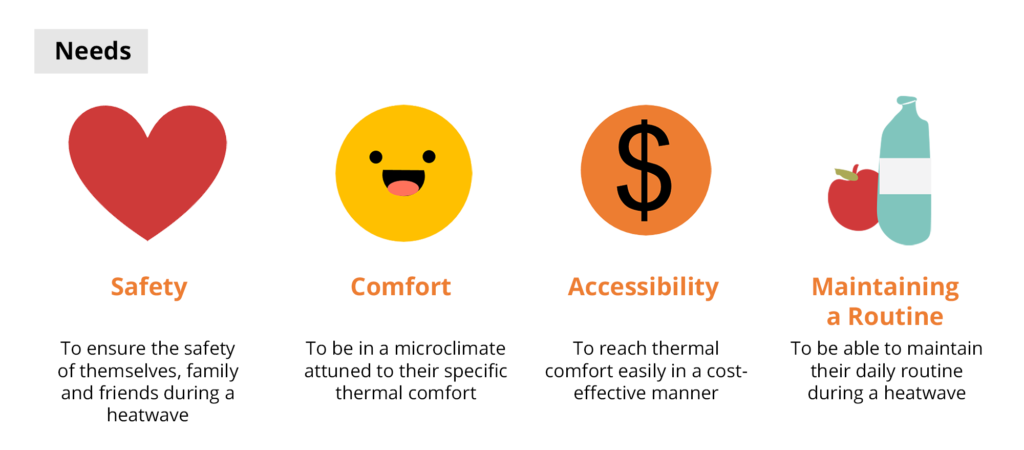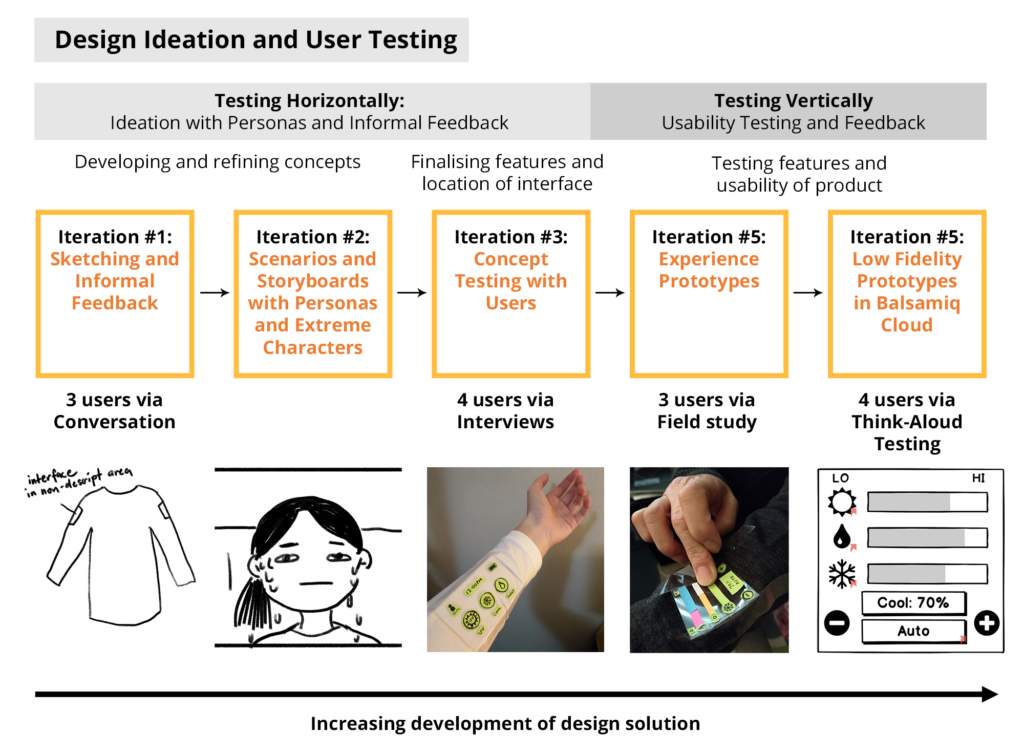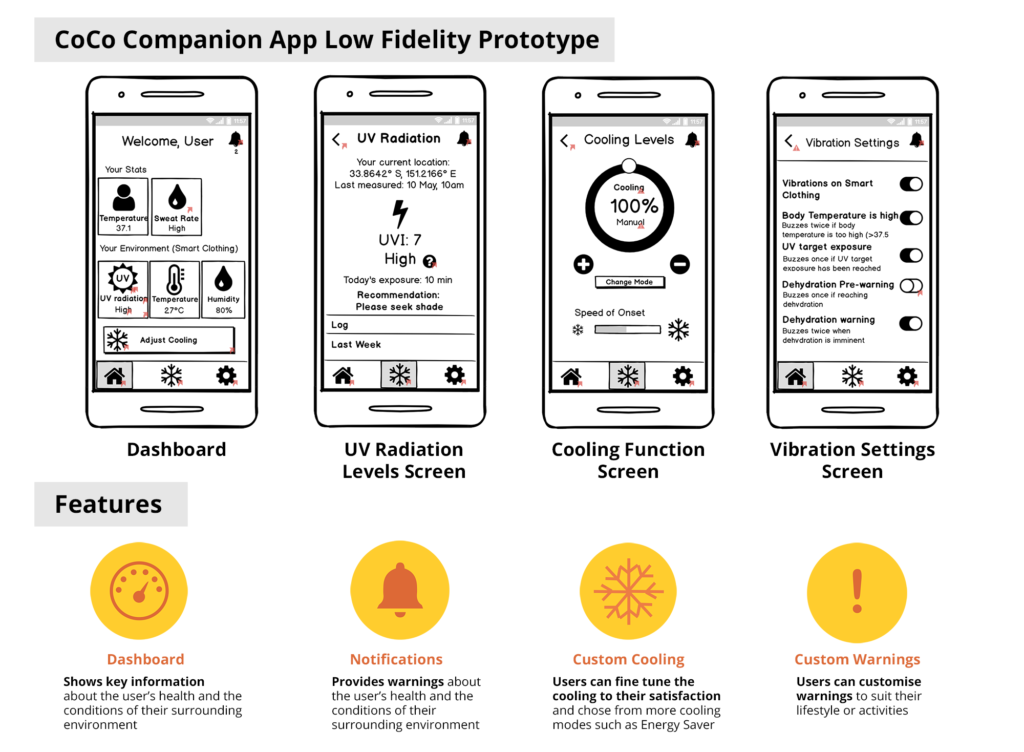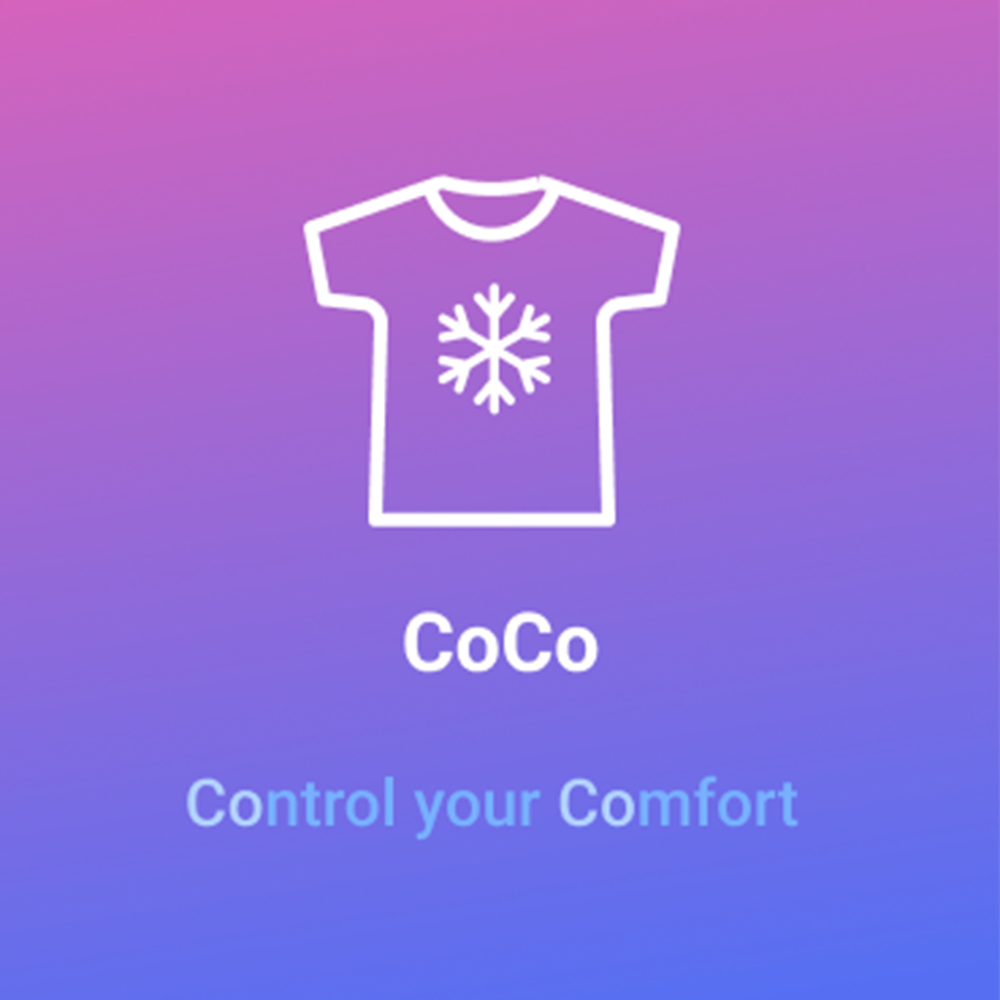Michelle Xiang
Introduction
In Australia, 2019 was not only the hottest but also driest year on record (Bureau of Meteorology, [BOM]). Since 1950, the number of heatwave days have been increasing in frequency in Australia. Heatwaves are emergencies, causing more deaths than any other natural hazard in Australia and increasing ambulance call-outs and mortality by nearly 11% (Jegasothy, McGuire, Nairn, Fawcett & Scalley, 2017). They increase the risk of heat-related illnesses such as heatstroke, where the body’s natural thermoregulatory capacity is overwhelmed.
CoCo (Controllable Comfort) is a smart clothing that lets users take control of their own safety during heatwaves, allowing cooling to be delivered to strategic locations in the body at the touch of a button. Users also receive dehydration and UV radiation warnings through haptic feedback to protect against heatstroke and sunburn. Through a companion app, users can view related information such as the temperature of their local environment and customize these warnings if needed.
User Research
User research was conducted by triangulating findings from online ethnography, questionnaires and interviews exploring peoples’ risk perception towards heatwaves and the methods they use to cope with them. From this research, the following user needs and issues were identified, which were then mapped to design solutions.

Design Process
In my design process, I aimed to firstly test horizontally to generate as many concepts as possible, and when the concept and features were established, test vertically to refine the functionality of each feature developed during the ideation process.

In iterations #1 and #2, multiple concepts were generated within these design solutions categories, and two concepts were chosen through informal feedback. These two concepts were refined using storyboards and scenarios such as the storyboard below:

After developing the concept further, I tested this concept through interviews to further refine the features of the smart clothing. The image below shows the main concept to be tested.

From this test, users generally agreed that UV levels, the cooling function and sweat levels were the most important features of the smart clothing. Furthermore, they preferred a small smart clothing interface and to have additional features in a companion app rather than a large interface and no app. After refining these features, I did a field test on three users, by asking to them interact with the smart clothing interface in different positions e.g. sitting, standing or lying down to assess the ideal location for the interface.

From this test, users indicated that the ventral, wrist area was the most preferred location. Next, I wanted to test the usability of the smart clothing interface and companion app through Think-Aloud testing. Users were given three tasks to complete relating to the function of the apps, and interacted with my app remotely using Balsamiq Cloud.

Based on these tests, refinements were made to interfaces of both apps, leading to the final design concept.
Final Design Concept


References
Baker, L., Ungaro, C., Sopena, B., Nuccio, R., Reimel, A., Carter, J., Stofan & Barnes, K. (2018). Body map of regional vs. whole body sweating rate and sweat electrolyte concentrations in men and women during moderate exercise-heat stress. Journal of Applied Physiology, 124(5), 1304-1318.
Banarjee, S., Hoch, E., Kaplan, P & Dumont, E. (2017). A Comparative Study of Wearable Ultraviolet Radiometers. In Gianluca, S. (Ed.), 2017 IEEE Life Sciences Conference (LSC), Sydney: NSW. Retrieved from https://storage.googleapis.com/emmanuel-public/Shade%20IEEE%20published.pdf
Bureau of Meterology. (2019). Annual Climate Statement 2019. Retrieved from: http://www.bom.gov.au/climate/current/annual/aus/#tabs=Overview
Charbax. (2019, Dec, 2). Dupont Intexar smart clothing, healthpatch prototype, Kapton conductive and dielectric inks and more. [Video File]. Retrieved from: https://www.youtube.com/watch?v=v2sUn83Ecbo.
Dupont. (2019). Smart Clothing Technology. Retrieved from: http://electronicmaterials.dupont.com/intexar.
Hong, S., Gu, Y., Seo, J., Wang, J., Liu, P., Meng, S., Xu, S. & Chen, R. (2019). Wearable thermoelectrics for personalized thermoregulation. Science Advances, 5(5), eaaw0536
Jegasothy, E. McGuire, R., Nairn, J., Fawcett, R., and Scalley, B. (2017). Extreme Climatic Conditions and Health Service Utilisation Across Rural and Metropolitan New South Wales. International Journal of Biometerology, 8, 1359-1370.
Robertson, M. & Barry, H. (2019). Monitoring Temperature. British Journal of Nursing, 28(6), 344-347.
